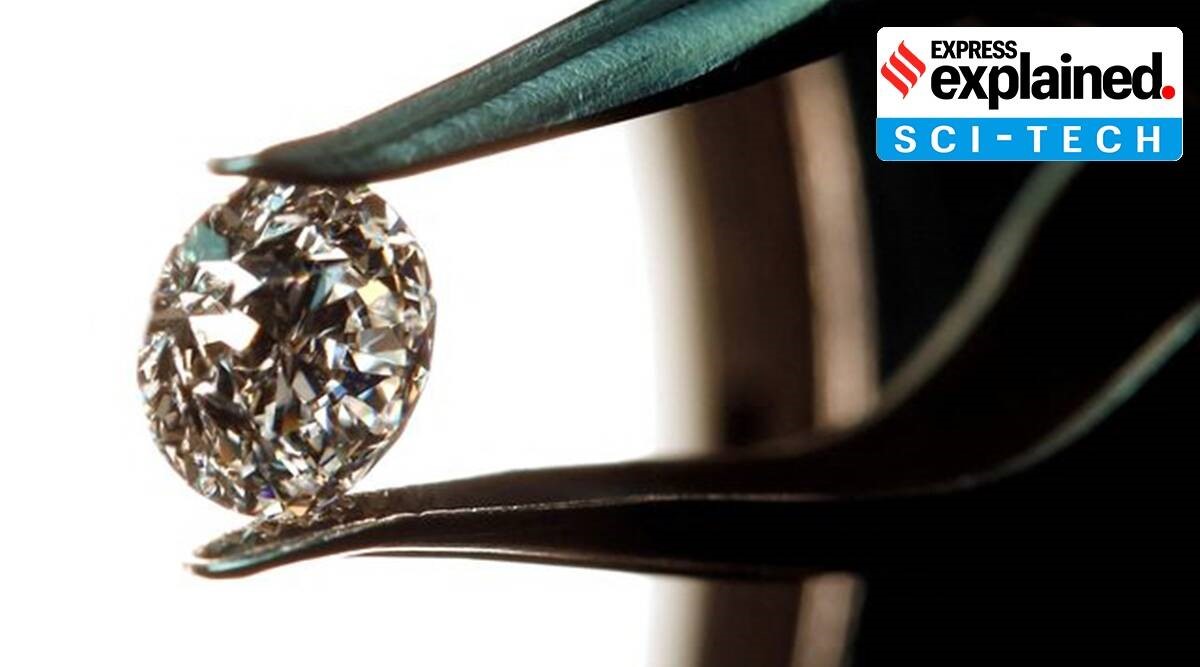09 Feb Lab Grown Diamonds
Lab Grown Diamonds
This article covers “Daily current events “and the topic is about ‘Lab-grown Diamonds’ which is in news, it covers the “Indian economy” In GS-3, the following content has relevance for UPSC.
For Prelims: About Lab-Grown Diamonds
For Mains: GS-3, Economic impact and application of Lab Grown Diamonds
Why in news:
Laboratory-Grown Diamonds have received particular attention from the Ministry of Finance (MoF) in its 2023–24 Union Budget (LGD).
The first-ever Lab Grown Diamonds were made around the globe in 1954 by researchers at a General Electric research facility in New York.
About Lab-Grown Diamonds
In contrast to diamonds that occur naturally, Lab Grown Diamonds are created in laboratories. The two, however, share the same physical and visual characteristics as well as the same chemical makeup.
Diamonds are naturally occurring materials that form when carbon deposits buried deep in the soil are exposed to extremely high temperatures and pressures over millions of years.

Lab Grown Diamonds
Production of Lab Grown Diamonds
- They are mostly produced using the High Pressure, High Temperature (HPHT) method or the Chemical Vapour Deposition (CVD) method.
- To create diamonds artificially, both HPHT and CVD start with a seed or a slice of another diamond.
- In the HPHT process, the seed is subjected to high pressure and temperatures around 1,500 degrees Celsius coupled with pure graphite carbon.
- The seed is heated to about 800 degrees Celsius using the CVD technique inside a sealed chamber that is filled with gas rich in carbon. As the gas adheres to the seed, the diamond progressively grows.
Applications
- Due to their additional strength and hardness, they are perfect for use as cutters in industrial machinery and tools.
- The fundamental characteristics of Lab Grown Diamonds are comparable to those of natural diamonds, particularly their optical dispersion, which gives them the distinctive sheen of diamonds. However, because they are produced in well-regulated conditions, many of their characteristics can be improved.
- In electronics, high-power laser diodes, laser arrays, and high-power transistors are cooled by using pure synthetic diamonds.
Significance
- It requires 10 times more energy to remove a natural diamond from the soil than it does to create one above the surface, according to a report by Diamond Foundry, an environmentally conscientious manufacturer of LCDs.
- One of the most popular techniques for extracting diamonds from their natural habitats includes moving tons of rock and dirt into an open pit.
- In comparison to naturally occurring diamonds, lab-grown diamonds have a significantly smaller environmental impact. According to a report by Diamond Foundry, the energy required to extract a natural diamond from the earth is ten times greater than the energy required to create one above the surface.
- Since LGDs are developed in laboratories, they can be customized to enhance characteristics that are particular to the application.
- For instance, in industrial applications, hardness may take precedence over optical or chemical characteristics.
The Diamond Industry in India
- Over 90% of polished diamond production worldwide is produced in India, which is also the largest diamond cutting and polishing hub in the world.
- This is ascribed to elements like the simplicity of finding highly skilled labor, advanced technology, and decreased associated expenses.
- Diamond making is a global industry in the Gujarati city of Surat.
- The largest market for cut and polished diamonds is the US, with China coming in second.
- 19% of the world’s total diamond exports come from India.
- Over 75% of the South Asian nation’s jewelry exports travel to the UAE, making it the top export market for Indian gold jewelry.
- India exported 2.43 billion USD worth of gems and jewelry in total in November 2022, an increase of 2.05% from the corresponding month in the previous year.
Government initiatives to promote Lab Grown Diamonds
- To increase the production of lab-grown diamonds in India, the 2023 Union Budget pledges to lower the basic customs duty on the seeds used to make them. The tariff on seeds for rough LGDs will be decreased from 5% to nil.
- One of the Indian Institutes of Technology (IITs) will also receive a research grant for five years to support its study and advancement of LGDs.
- To facilitate better product identification, including that of synthetic diamonds, MoF has also suggested the development of additional tariff lines. The purpose of the action is to make it clear how to qualify for reduced import duties and to aid in facilitating trade.
Source:
Daily Current Affairs for us
The topic described above is related to Daily Current Affairs and reflects the present status of lab-grown diamonds in the market. Get such kinds of the best daily current affairs on the Indian Economy for the UPSC examination free of cost. Also, collect the weekly, and monthly current affairs from us for IAS exam preparation.



No Comments